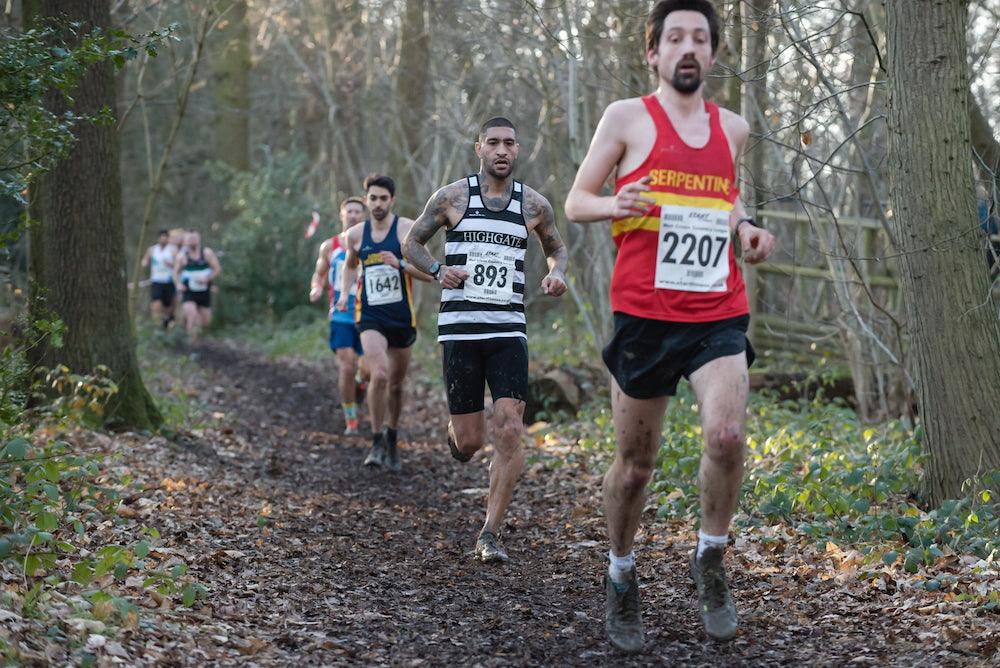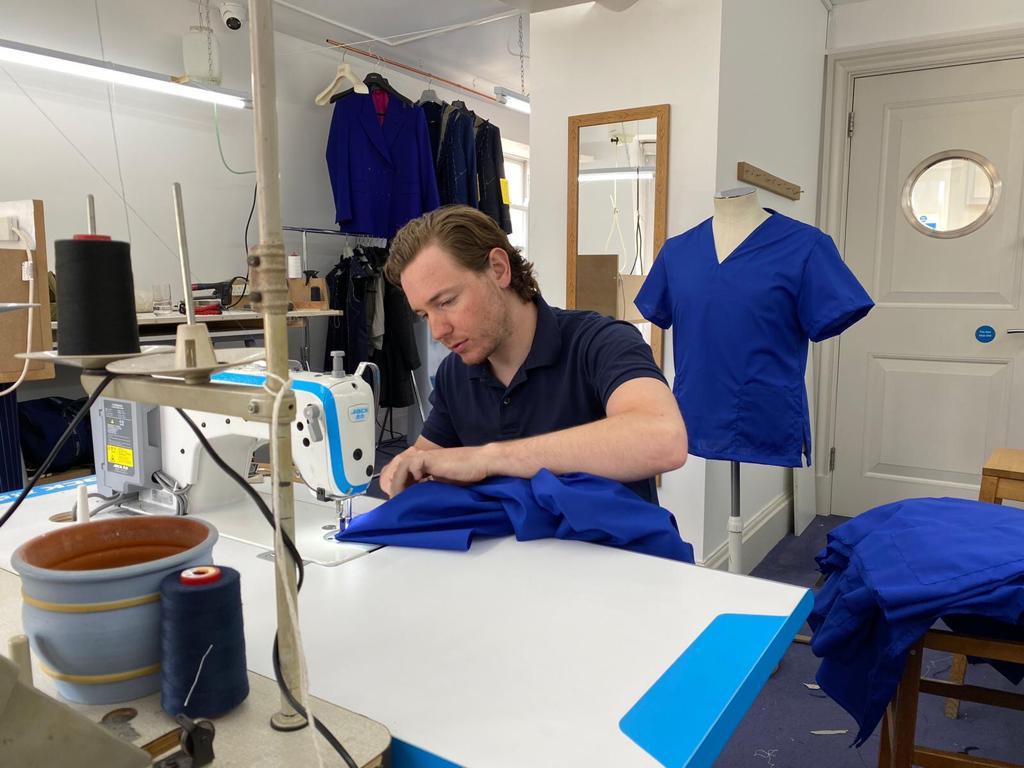
Leon's Lockdown Running Tips

Highgate Harrier and our Savile Row store manager Leon gives you the lowdown on getting into some lockdown running…
I’d say the most important thing if you’re brand new to running or you’re getting back to it after a long break is to start out really easy and build up gradually so you avoid injury. Here are a few tips that will hopefully get you started off on the right foot.
With the situation we’re in at the moment it’s impossible to get fitted or have your gait cycle checked for running shoes. But every running shoe company is still delivering, so invest in some decent running shoes before starting. Those Adidas Sambas you wore for indoor football five years ago are definitely going to cause more damage than good!!!
Try and invest in some running specific clothing. Or active clothing that is made out of lightweight wicking fibres. While these garments aren't necessary for running, they help you stay dry and comfortable when you work out (and hopefully stop the dreaded chaffing...!).

Prehab is better than rehab, so take measured steps to keep your body safe and free from injury. First, warm-up before you start running. You might start with dynamic stretches then go into a five to ten minute walk or easy jog. There are lots of helpful videos on YouTube for some dynamic warm-up routines. I stay away from static stretches before running as there is a school of thought that these can actually cause more damage. Best leave the static stretching 'til you’re home on the comfy rug!
There’s nothing wrong with starting your running journey by combining your runs with intervals of walking. For most new runners, this is the easiest way to build endurance, with less stress on the joints and a manageable intensity level, without causing injury.
Simply start with a few minutes of running and one minute of walking, and then try to increase the running. As you become more comfortable, make the switch to all running.
Remember you should be enjoying your running! Your runs might be challenging in the beginning, but they shouldn't be so hard that you never want to run again!!! During each session keep a comfortable, conversational pace. If you can’t speak in full sentences, slow down. If you're running alone try talking to yourself, or if you’re listening to music make sure you can sing along comfortably (I’ve been caught bellowing out my fave lyrics on runs!).
Breathe in through your nose and mouth so you get the optimum amount of oxygen. Try to breath deeply into your belly to avoid side stitches or cramps.
After each run, cool down by doing some easy jogging or walking. Some gentle stretching will help you avoid tight muscles.
The key when starting to run is consistency in your programme rather than speed or distance. Try and get into a regular running habit. The first few runs will probably hurt, but I can assure you that a couple of weeks in you’ll be over the hump!! You might even start enjoying it!
Good posture is massively important when running. So try to keep your posture upright. Your head should be lifted and looking ahead (not at your feet), your ears should be in line with your shoulders, your back should feel long and tall, and your shoulders should be level but relaxed. Maintain a neutral pelvis. Make sure you're not leaning forward or back at your waist (which some runners do as they get tired).
It’s a lot to take in so maybe try and focus on one bit of posture per run. Or on different parts of your run pay attention to different parts of your body and what it’s doing, and try and correct it if it's wrong.
Running with hunched shoulders or rounding them too far forward tends to tighten the chest and will restrict breathing. Again, it helps to look ahead. Focus your eyes on the ground about 10 to 20 feet ahead of you.
Your arms will and should swing naturally back and forth from the shoulder joint (rather than your elbow joint). Try and keep a 90ish degree bend at the elbow. If you’re in the right position, your hand should almost graze your hip as it moves back and forth.
Try as best you can to keep your hands relaxed. You can gently cup your hands or simply let them relax (I try and imagine I’m holding crisps - you don’t wanna crush those things!). Clenching them into fists can lead to tension in the arms, shoulders and neck (and more importantly waste energy!!), and you’ll crush those crisps!!!
There are different ways that your foot may hit the road when running. You may land on your heel, in the middle of your foot, or on the toes or forefoot. If you land on your toes, you are a toe runner and you may experience tight calves as a result. You may also develop shin pain. I suffered terribly from this while training for two marathons, but I have slightly adjusted where my foot hits the road over time and seem to be over the shin issues (touchwood, he says...). Also, do not make any massive adjustments in running form or gait straight away as these are best changed incrementally to avoid causing damage.
If you land on your heels, you are a heel striker. This probably means you could be over-striding, which means taking steps that are longer than they need to be. This can waste energy and may cause injury. You really want your legs to be landing under your centre of gravity and not out in front of you. Landing out in front of you, your legs are in essence acting like a natural break and all that breaking force goes back up the leg, which again can cause injury.
Most coaches and running experts advise that the best way to land is mid-forefoot. You should try to land in the middle of your foot, and then roll through to the front of your toes. Again, if you do not land like this naturally it may feel weird, so you may want to experiment and see how it feels.
However, if you are naturally a toe runner or a heel striker it may be best not to change your stride too much without some proper guidance from a specialist running shop once we’re out of lockdown.
Staying hydrated can make or break a run and although I don’t carry or like to carry a water bottle on a run (I find it disturbs my arm swing), I do try and hydrate plenty before leaving. I also like to give myself an hour and a half or an hour at least to get ready for a run. In that time, I can have a small bite to eat, have a coffee, drink some water and visit the bathroom before the run. And I’ll still have time for my dynamic warm up. Whilst on the run I do carry my bank card (more so in summer when it’s warmer) just in case I need water. Another good tip is to plan a route through parks that have water fountains. I have a long run route that I know has six or seven water fountains along the way. And remember to eat and rehydrate once home, your body will thank you for it tomorrow.
Your running routine should include more than just running. It's a good idea to mix other activities into your training. Cross-training really helps to balance different muscle groups, prevent overuse injuries, and mix up your workout routine so that you don't get bored. Cycling is a great one during lockdown (unless you’re lucky enough to have a pool in the back garden…). Strength training one or two times a week can also help with injury and improve your running. This doesn’t mean that you have to hit the gym and lift heavy weights. There are a lot of body weight things and workouts you can do with just a set of resistance bands.
And, finally and most of all, just enjoy it and follow all the social distancing rules and advice! Get out there and good luck to you! And get yourself on some sort of platform to log your runs on too, because it is great motivation. I use Strava so get on and give me a follow!




